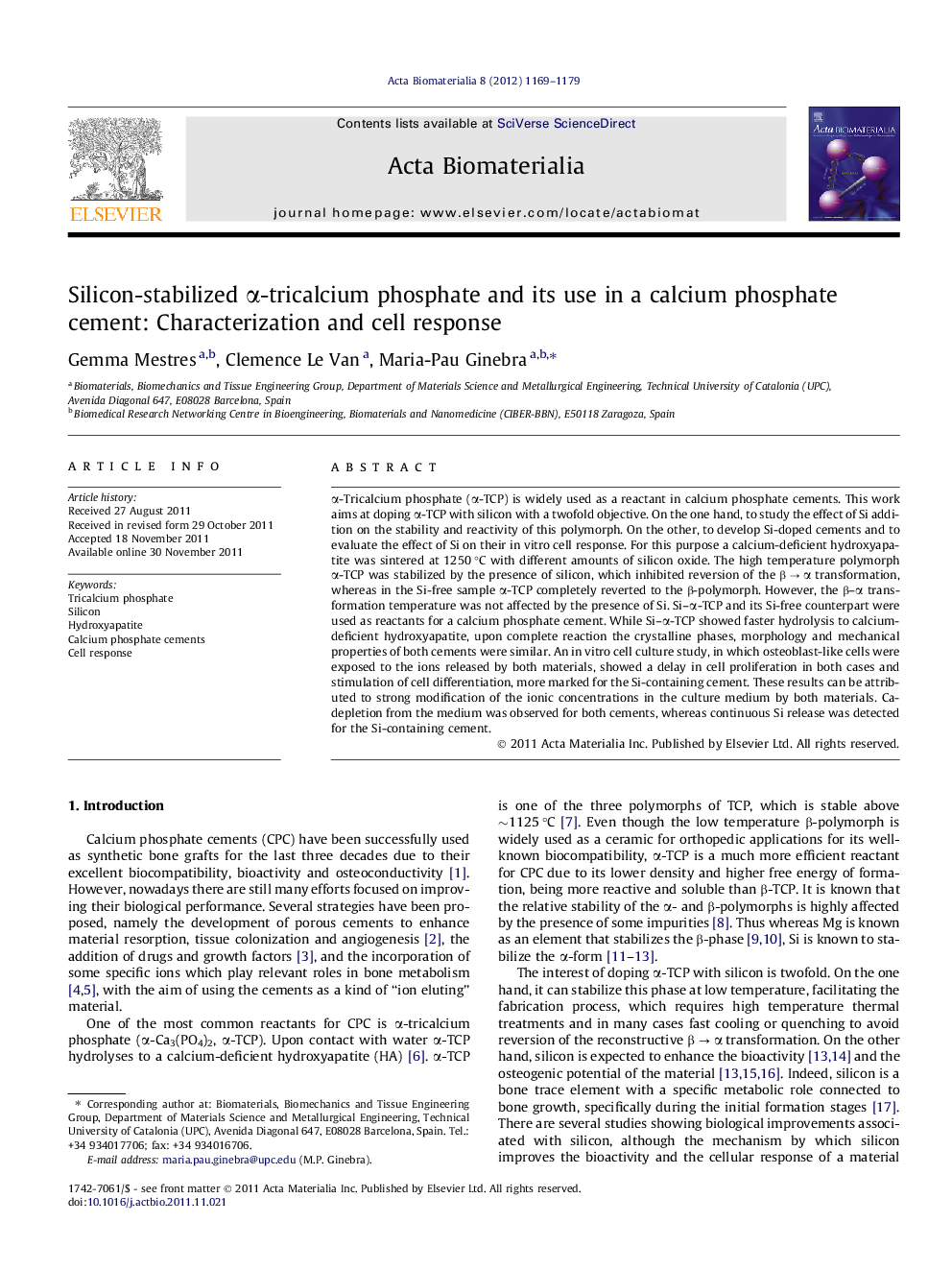| Article ID | Journal | Published Year | Pages | File Type |
|---|---|---|---|---|
| 787 | Acta Biomaterialia | 2012 | 11 Pages |
α-Tricalcium phosphate (α-TCP) is widely used as a reactant in calcium phosphate cements. This work aims at doping α-TCP with silicon with a twofold objective. On the one hand, to study the effect of Si addition on the stability and reactivity of this polymorph. On the other, to develop Si-doped cements and to evaluate the effect of Si on their in vitro cell response. For this purpose a calcium-deficient hydroxyapatite was sintered at 1250 °C with different amounts of silicon oxide. The high temperature polymorph α-TCP was stabilized by the presence of silicon, which inhibited reversion of the β → α transformation, whereas in the Si-free sample α-TCP completely reverted to the β-polymorph. However, the β–α transformation temperature was not affected by the presence of Si. Si–α-TCP and its Si-free counterpart were used as reactants for a calcium phosphate cement. While Si–α-TCP showed faster hydrolysis to calcium-deficient hydroxyapatite, upon complete reaction the crystalline phases, morphology and mechanical properties of both cements were similar. An in vitro cell culture study, in which osteoblast-like cells were exposed to the ions released by both materials, showed a delay in cell proliferation in both cases and stimulation of cell differentiation, more marked for the Si-containing cement. These results can be attributed to strong modification of the ionic concentrations in the culture medium by both materials. Ca-depletion from the medium was observed for both cements, whereas continuous Si release was detected for the Si-containing cement.
